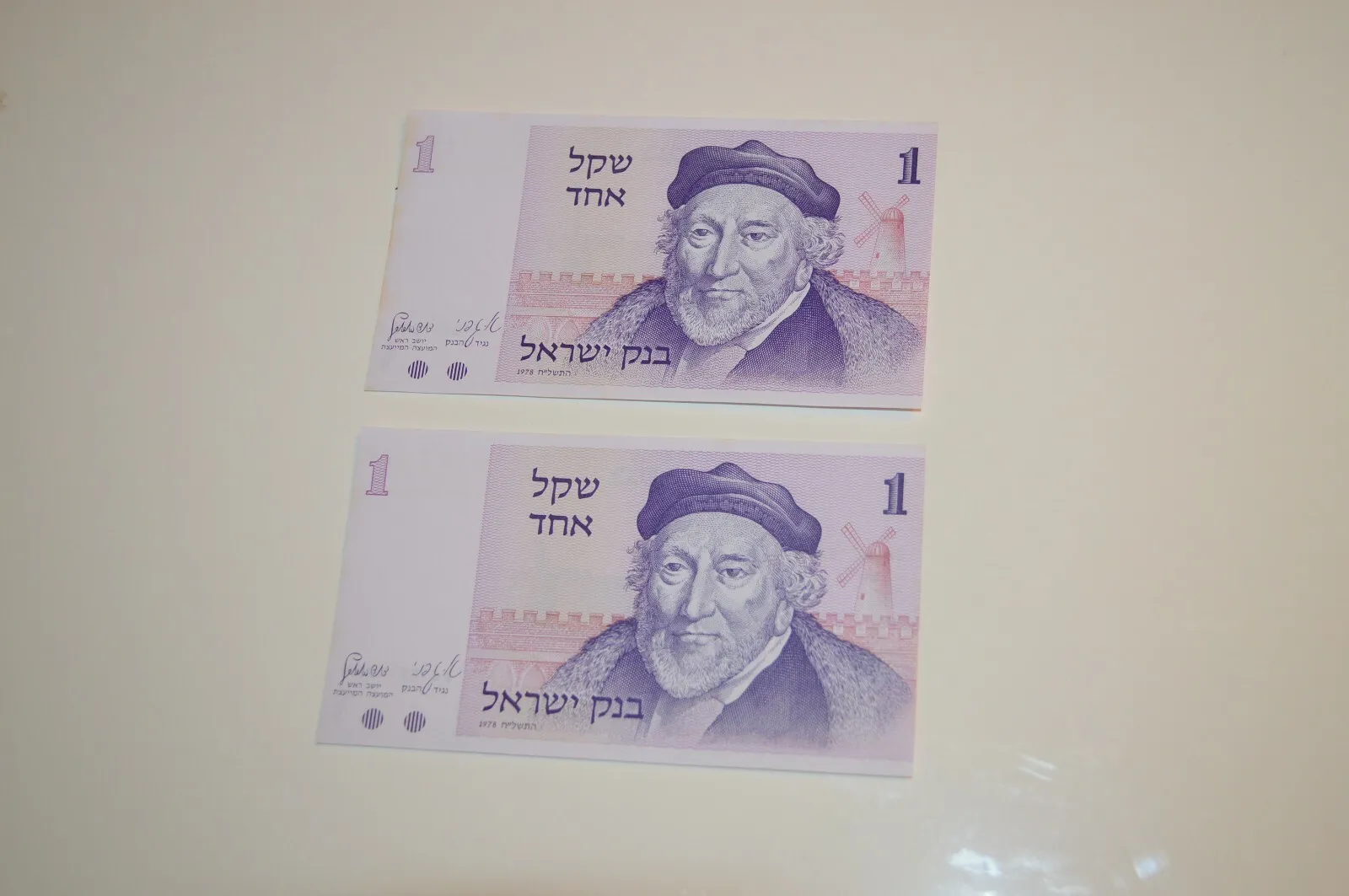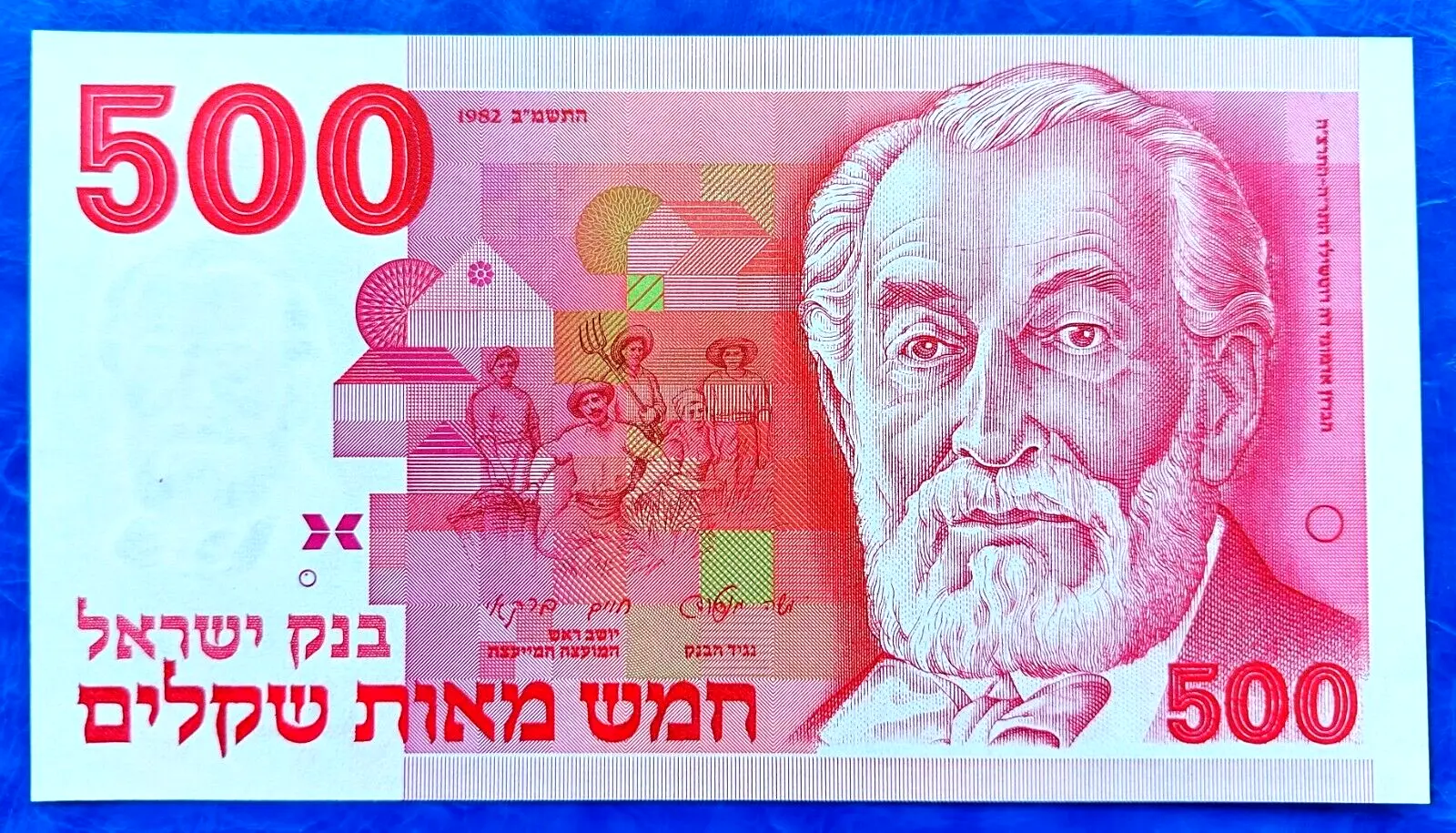-40%
**2 BARS BELOW S/N**, PMG 58 EPQ ISRAEL 100 Sheqalim,1979, #P-47b A- UNC .
$ 66
- Description
- Size Guide
Description
**2 BARS BELOW S/N**, PMG 58 EPQ ISRAEL 100 Sheqalim,1979, #P-47b A- UNC .100 Sheqel
Obverse: Ze'ev Jabotinsky
Reverse: Herod's Gate, Jerusalem
Dominant color: orange-brown
Dimensions: 159 x 76 mm
Signatures: Arnon Gafni, Governor Bank of Israel; Mark Mosevicz, Chairman Advisory Council
Printers (unverified): Royal Joh. Enschedé, Haarlem/Netherlands
Date of issue: 11 December 1980
On the 100 Sheqalim banknote appears Zeev Vladimir Jabotinsky (1880-1940), soldier, orator, novelist and poet, founder of the Jewish Legion and supreme commander of the Irgun Tzva'i Le'umi (IZL or Etzel). Born in Odessa, Jabotinsky became absorbed in Zionist activities from an early age, advocating settlement in Eretz Israel and political and educational activities in the Diaspora. Together with Joseph Trumpeldor he formed a Jewish Legion, the "First Judean Regiment" (with a Menorah as its insignia), to join the Allies in liberating Eretz Israel from Ottoman rule. Jabotinsky headed the first company to cross the Jordan River, and was decorated for doing so. Anticipating anti-Jewish violence by Arab extremists, in 1920 Jabotinsky organized the Haganah in Jerusalem, openly leading it to confront Arab mobs during the Passover riots. In 1923, after disagreement over Zionist acquiescence in the British role in Palestine, Jabotinsky left the Zionist Organization and in 1935 he founded his own revisionist New Zionist Organization (NZO). Following the Arab uprising of 1936, Jabotinsky became supreme commander of the IZL in 1937. In his book The Jewish War Front (1940), he formulated what he though should be the Jewish attitude to the war and its aftermath. In February 1940 he went to the US to enlist support for a Jewish army, but in August he died of a heart attack near New York. His remains were reinterred on Mount Herzl in Jerusalem in 1965.
The obverse of the banknote shows Jabotinsky's portrait with in the background the Shuni House near Binyamina, a training camp of the Irgun during the dying days of the British mandate, now a national monument.
On the reverse is Herod's Gate (Flower Gate in Hebrew), one of the gates in the wall around the Old City of Jerusalem.
Combine
shipping











